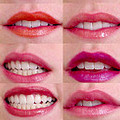 加拿大政府1月30日公布,有二種經常使用於口紅、唇膏等個人護理用品的化學物質,可能毒害我們的環境,雖然政府官員表示他們的使用量還不足以對人類健康造成危害;而另外還有其他二種使用於化妝品的化學物質被發現有害人類健康。
加拿大政府1月30日公布,有二種經常使用於口紅、唇膏等個人護理用品的化學物質,可能毒害我們的環境,雖然政府官員表示他們的使用量還不足以對人類健康造成危害;而另外還有其他二種使用於化妝品的化學物質被發現有害人類健康。
加拿大是第一個國家以環境或健康為考量基礎而針對這些化學物質做出公告。
這二種用於個人護理用品而可能對環境造成危害的化學物質分別是矽氧烷(siloxanes)D4和D5,其經常使用於潤膚劑中以軟化肌膚,在加拿大和美國市場上大多數的個人護理產品當中都可以發現矽氧烷的成分存在。
矽氧烷同時也使用於紡織品、油漆塗料、止汗劑、密封劑、潤滑劑、塑膠、不含醫療性成分的藥品、矽膠聚合膠水、食物添加劑、傷口的表面護理以及醫藥設備等。
 雖然這些化學物質目前對於人類健康還不至於造成傷害,但是其大量地進入我們的環境,並遺留在我們的環境當中,再經由生物累積形成食物鏈即可能會對魚類或是水中生物造成傷害,加拿大政府目前正在計畫對這些化學物質設置濃度限值(concentration limit)。
雖然這些化學物質目前對於人類健康還不至於造成傷害,但是其大量地進入我們的環境,並遺留在我們的環境當中,再經由生物累積形成食物鏈即可能會對魚類或是水中生物造成傷害,加拿大政府目前正在計畫對這些化學物質設置濃度限值(concentration limit)。
而這將有助於減少矽氧烷D4和D5用於個人護理用品的數量,這些化學物質在被洗掉之後將會釋放到城市的汙水或溪流中;同時,政府也提議要訂立規則以管理D4和D5釋放到環境的數量,因其也會造成城市廢水。
另外二種使用於化妝品且已經發現可能對人類健康有害的化學物質為異戊二烯(isoprene)以及環氧氯丙烷(epichlorohydrin),這二種物質都有可能會致癌。
 未來在化妝品成分名冊中將會加入這二種化學物質以防止其將來被使用於化妝品的機會,對異戊二烯而言,加拿大衛生部提議製造商必須使用最加可行的處理技術來控制其散佈。
未來在化妝品成分名冊中將會加入這二種化學物質以防止其將來被使用於化妝品的機會,對異戊二烯而言,加拿大衛生部提議製造商必須使用最加可行的處理技術來控制其散佈。
加拿大環境部長潘迪思(Jim Prentice)以及衛生部長阿盧卡克(Leona Aglukkaq)1月30日宣布在這二種化學物質中發現毒性反應,他們發表最後結論同時也針對加拿大化學品管理計畫(Canada's Chemicals Management Plan)的第二組化學成分制訂初步的危機管理辦法。
The Canadian government today declared two chemicals used in lipstick and other personal care products to be toxic to the environment, although officials said they are not used in large enough quantities to be of concern for human health. Two other chemicals used in cosmetics were found to be harmful to human health.
Canada's declaration is the first environmental or health-based determination concerning these chemicals issued by any country.
The two personal care chemicals of concern for the environment are the siloxanes D4 and D5. Used as emollients to soften the skin, siloxanes are found in most personal care products on the market in Canada and the United States.
The siloxanes are also used in textiles, paints and coatings, antiperspirants, sealants, lubricants, plastics, non-medical ingredients in pharmaceuticals, silicone polymers, food additives, surface treatments for wounds, and medical devices.
While not believed to be harmful to health, because these chemicals enter the environment in large quantities, persist in the environment, bioaccumulate up the food chain and may harm fish and aquatic organisms, Canada is proposing to set concentration limits for them.
This will minimize the amount of D4 and D5 in personal care products that is released to municipal wastewater streams when they are washed off. The government also proposes to regulate the amounts of D4 and D5 that are released to the environment manufacturing process wastewater.
Two other substances used in cosmetics were found to be of concern for human health - isoprene and epichlorohydrin - both considered to be human carcinogens.
They will be added to the Cosmetic Ingredient Hotlist to prevent their future use in cosmetics. For isoprene, Health Canada is proposing that manufacturers use best-available technology to control releases.
Environment Minister Jim Prentice and Health Minister Leona Aglukkaq announced the findings of toxicity today as they released final conclusions and initial risk management approaches for Batch 2 substances in Canada's Chemicals Management Plan




